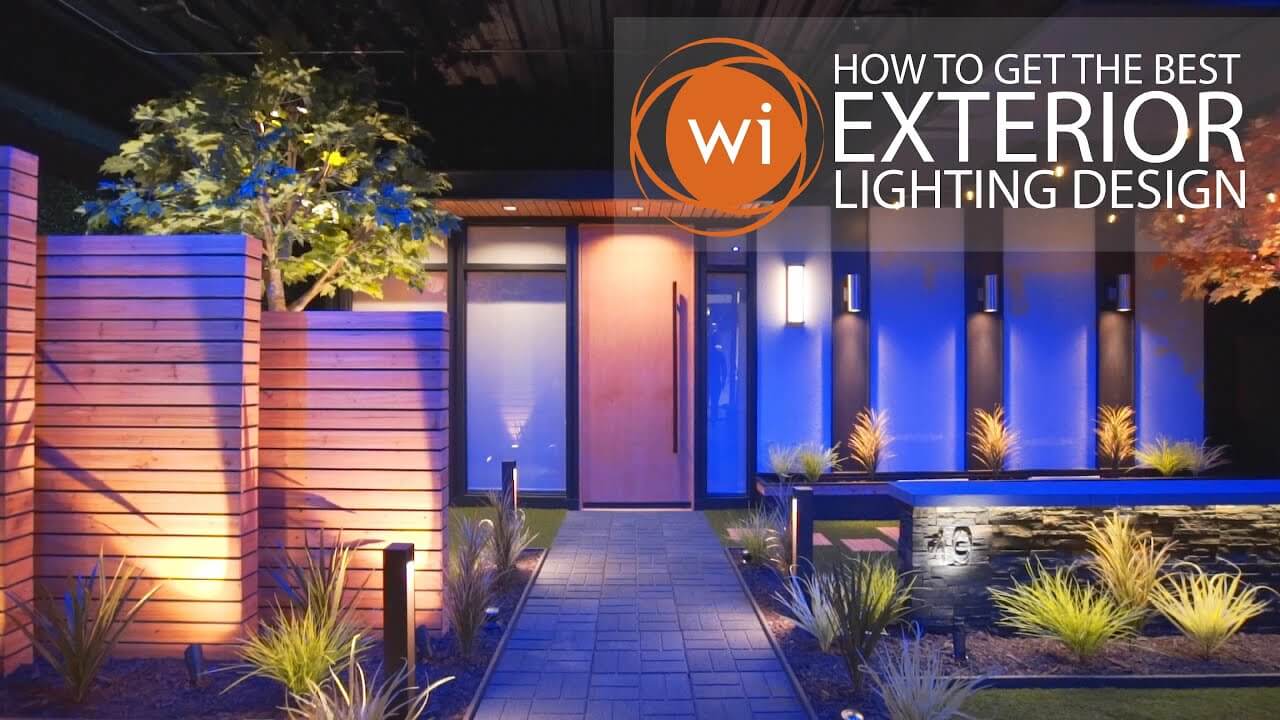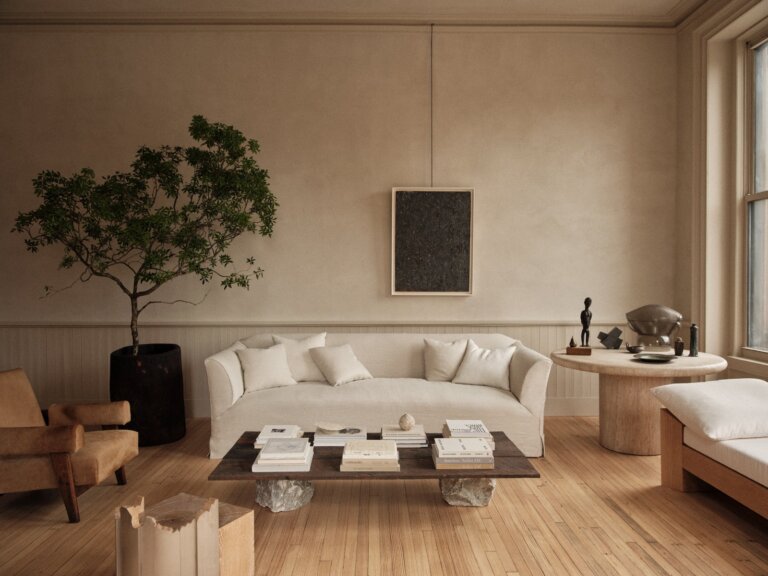Designing exterior lighting can transform your outdoor space. It enhances safety and highlights architectural features.
Knowing where to start can be challenging. Exterior lighting design involves more than just placing lights. It requires thoughtful planning and creativity. The goal is to create a functional and inviting outdoor area. Good lighting can improve the ambiance and increase your home’s value.
Whether you want to illuminate a garden path or highlight your home’s façade, proper planning is key. This guide will help you understand the basics and create a stunning outdoor lighting scheme. Let’s explore how to design exterior lighting that suits your needs and style.

Credit: www.youtube.com
Introduction To Exterior Lighting
Outdoor lighting makes your home look nice. It also keeps it safe. Good lighting helps people see at night. It can stop thieves. You can use lights to show paths. This way, no one trips or falls. Lights can also make your garden look pretty. They can highlight trees and flowers. Good lighting is more than just for looks. It is for safety and beauty.
Well-designed lighting offers many benefits. It saves energy. You can use LED lights. They use less power. This saves money. It also helps the environment. Good lights last long. You do not need to change them often. This saves time and effort. Lights can also make your home feel warm. They create a nice mood. Good lighting is worth the effort. It makes life easier and better.

Credit: www.youtube.com
Planning Your Lighting Design
Creating an effective exterior lighting design involves balancing functionality and aesthetics. Consider using a mix of ambient, task, and accent lighting to enhance outdoor spaces. Thoughtfully placed lights can improve safety and highlight architectural features.
Assessing Your Space
First, examine your outdoor area. Look at your garden, yard, or patio. Note the size and shape of your space. Consider any existing features like trees, pathways, or structures. Think about how you use the area. Do you have a seating area or a garden? Do you need to light up a walkway?
Identify dark spots that need lighting. Note any hazards like steps or uneven ground. Consider the style and color of your home. Think about how the lighting will fit with your overall design. This step is key to a good plan.
Identifying Key Areas
Decide which areas need light. Entryways and pathways are important. Patio and deck areas also need good lighting. Gardens can benefit from spotlights. Consider security lights for dark corners. Accent lighting can highlight features like trees or statues. Layering light helps create a warm, inviting space. Use different types of lights to achieve this. Balance is key to a well-lit area.
Types Of Exterior Lighting
To design exterior lighting, consider various types like pathway lights, wall lights, and spotlights. Each type serves a specific purpose, enhancing both safety and aesthetics. Proper placement and selection create a welcoming and well-lit outdoor space.
Ambient Lighting
Ambient lighting provides overall illumination. It helps create a comfortable level of brightness. This lighting is often placed on walls or ceilings. It ensures the outdoor area is safe and usable.
Task Lighting
Task lighting focuses on specific areas. It helps with activities like grilling, reading, or working. This type of lighting includes pathway lights and security lights. Task lighting makes it easier to see what you are doing.
Accent Lighting
Accent lighting highlights certain features. It adds drama and style to the outdoor space. It can be used to illuminate trees, sculptures, or architectural details. Accent lighting helps create a beautiful, inviting atmosphere.

Credit: desertexteriorlighting.com
Choosing The Right Fixtures
Wall lights create a welcoming look. They are perfect for front doors. Placing them on either side of the door adds balance. Choose styles that match your home’s design. Ensure they provide enough light for safety.
Path lights guide you through the garden. They highlight walkways and flower beds. Low voltage options are safe and easy to install. Select fixtures that blend with your landscape. Space them evenly for the best effect.
Spotlights focus on specific features. Use them to highlight trees or statues. Angle them correctly to avoid glare. Adjustable fixtures offer more flexibility. Ensure they are weather-resistant for long-term use.
Energy-efficient Options
LED lights are very bright and use less energy. They last longer than other lights. This means less money spent on replacements. You can find LED lights in many colors and styles. This makes it easy to match your home’s look.
Solar lights use the sun’s energy. They save on electricity bills. They are also easy to install. Place them where they can get sunlight. Many solar lights come with sensors. These sensors turn the lights on at dusk and off at dawn.
Installation Tips
Before starting, turn off the power. This prevents shocks. Wear rubber gloves and safety glasses. Check wires for damage. Do not touch wet surfaces. Use a voltage tester to ensure no live wires. Keep children and pets away from the work area. Have a flashlight handy.
Hiring a professional ensures expert work. They follow safety codes. Professionals have the right tools. They save you time. DIY can save money. You learn new skills. But, it can be risky. Mistakes can be costly. Choose what fits your comfort level.
Creating Ambiance
Using dimmer switches can help you control the light’s brightness. You can set the mood easily. Bright lights can be harsh. Soft lights can be relaxing. Adjust the light to fit the occasion. Dimmer switches add flexibility. They also save energy. A small change can make a big difference.
Incorporating Color
Adding color to your lighting can create a unique look. Colored lights can highlight special areas. Use blue for a calm effect. Red can add warmth. Green can make the space feel fresh. Mix and match colors for a fun touch. Colored lights are easy to install. They can change the whole feel of your exterior space.
Maintenance And Care
Proper maintenance and care of exterior lighting ensure longevity and safety. Regularly clean fixtures and check for damaged wiring. Timely replacement of bulbs keeps your outdoor space well-lit and inviting.
Cleaning Fixtures
Outdoor light fixtures can get dirty. Dust and dirt can block light. Use a soft cloth to clean them. Water and mild soap work best. Avoid strong cleaners. They can damage fixtures. Dry them well after cleaning.
Replacing Bulbs
Check bulbs often. Make sure they work. If a bulb goes out, replace it quickly. Turn off the power first. Use the right type of bulb. Follow the fixture’s guidelines. This will keep your lights safe and bright.
Frequently Asked Questions
What Are The Benefits Of Exterior Lighting?
Exterior lighting enhances safety and security. It also highlights architectural features and improves curb appeal. Proper lighting extends outdoor usability.
How To Choose Exterior Light Fixtures?
Select fixtures based on style, purpose, and weather resistance. Consider energy efficiency and placement for optimal illumination.
Where To Place Exterior Lights?
Place lights at entryways, pathways, and driveways. Highlight landscaping and architectural details. Ensure even coverage for safety.
What Types Of Exterior Lighting Are Best?
LED lights are energy-efficient and long-lasting. Floodlights provide security, while pathway lights improve navigation. Spotlights highlight features.
Conclusion
Designing exterior lighting enhances your home’s beauty and safety. Start with a clear plan. Consider function and style. Use energy-efficient bulbs to save money. Highlight key features like pathways and gardens. Ensure lights are weather-resistant for durability. Balance brightness to avoid glare.
Test the setup before finalizing. Proper lighting creates a welcoming atmosphere. Enjoy your well-lit and attractive outdoor space.

My name is Mahi Uddin, and I’m a blog writer with over two years of experience specializing in creating engaging, informative content using AI tools. I contribute to InExDecor.com, where I share creative ideas and practical tips for transforming interior and exterior spaces into beautiful, functional environments. With a passion for storytelling and a knack for blending creativity with technology, I strive to craft blogs that not only inform but also inspire readers. When I’m not writing, you can find me exploring design trends or enjoying a good book with a cup of coffee.






